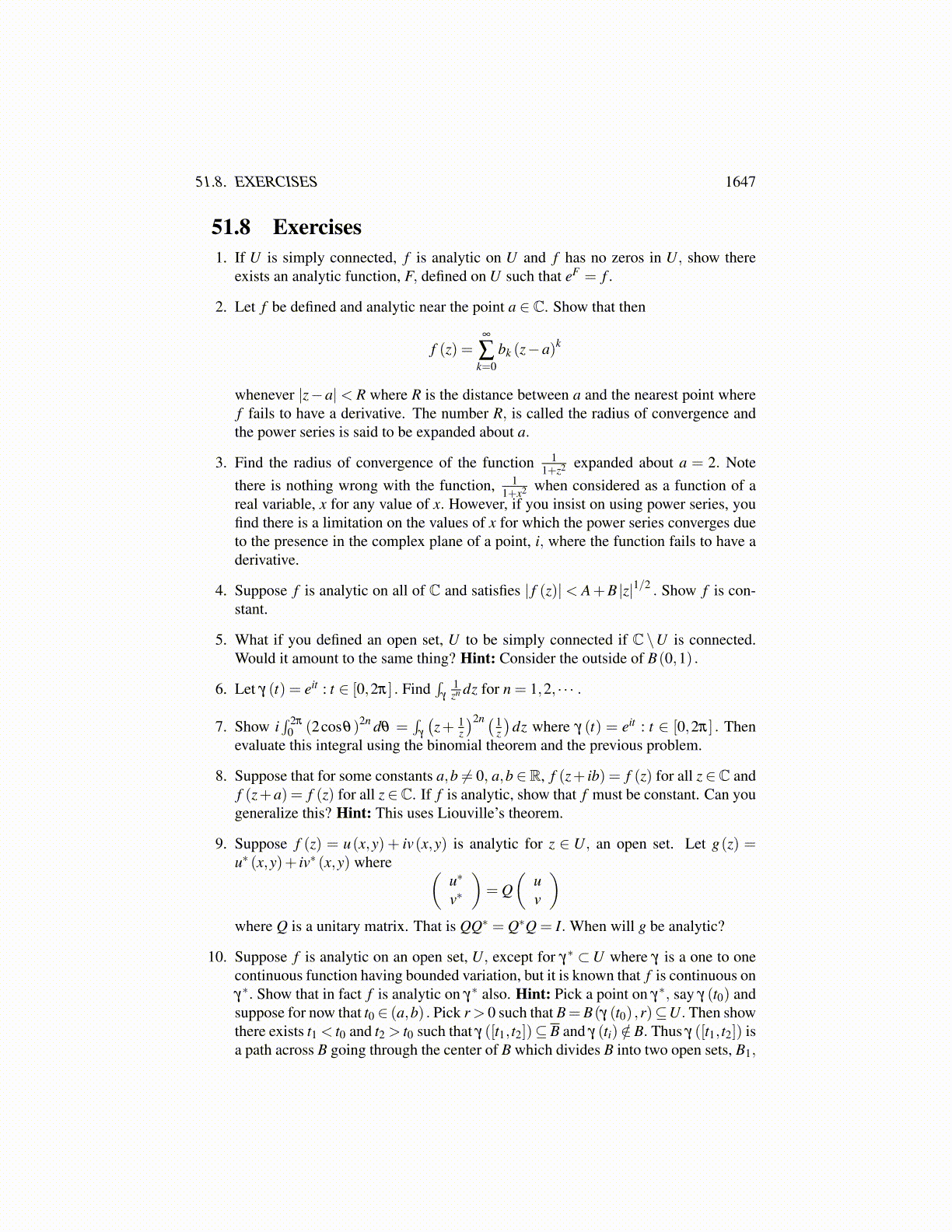
51.7. THE GENERAL CAUCHY INTEGRAL FORMULA 1647
K
K
Ω
Let S denote the set of all the closed squares in this tiling which have nonempty inter-section with K.Thus, all the squares of S are contained in Ω. First suppose p is a point ofK which is in the interior of one of these squares in the tiling. Denote by ∂Sk the boundaryof Sk one of the squares in S, oriented in the counter clockwise direction and Sm denote thesquare of S which contains the point, p in its interior. Let the edges of the square, S j be{
γjk
}4
k=1. Thus a short computation shows n(∂Sm, p) = 1 but n(∂S j, p) = 0 for all j ̸= m.
The reason for this is that for z in S j, the values{
z− p : z ∈ S j}
lie in an open square, Qwhich is located at a positive distance from 0. Then Ĉ \Q is connected and 1/(z− p) isanalytic on Q. It follows from Corollary 51.7.23 that this function has a primitive on Q andso ∫
∂S j
1z− p
dz = 0.
Similarly, if z /∈ Ω,n(∂S j,z) = 0. On the other hand, a direct computation will verify that
n(p,∂Sm) = 1. Thus 1=∑ j,k n(
p,γ jk
)=∑S j∈S n(p,∂S j) and if z /∈Ω, 0=∑ j,k n
(z,γ j
k
)=
∑S j∈S n(z,∂S j) .
If γj∗k coincides with γ l∗
l , then the contour integrals taken over this edge are taken inopposite directions and so the edge the two squares have in common can be deleted withoutchanging ∑ j,k n
(z,γ j
k
)for any z not on any of the lines in the tiling. For example, see the
picture,
From the construction, if any of the γj∗k contains a point of K then this point is on one